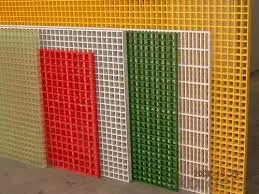
-
 Afrikaans
Afrikaans -
 Albanian
Albanian -
 Amharic
Amharic -
 Arabic
Arabic -
 Armenian
Armenian -
 Azerbaijani
Azerbaijani -
 Basque
Basque -
 Belarusian
Belarusian -
 Bengali
Bengali -
 Bosnian
Bosnian -
 Bulgarian
Bulgarian -
 Catalan
Catalan -
 Cebuano
Cebuano -
 China
China -
 China (Taiwan)
China (Taiwan) -
 Corsican
Corsican -
 Croatian
Croatian -
 Czech
Czech -
 Danish
Danish -
 Dutch
Dutch -
 English
English -
 Esperanto
Esperanto -
 Estonian
Estonian -
 Finnish
Finnish -
 French
French -
 Frisian
Frisian -
 Galician
Galician -
 Georgian
Georgian -
 German
German -
 Greek
Greek -
 Gujarati
Gujarati -
 Haitian Creole
Haitian Creole -
 hausa
hausa -
 hawaiian
hawaiian -
 Hebrew
Hebrew -
 Hindi
Hindi -
 Miao
Miao -
 Hungarian
Hungarian -
 Icelandic
Icelandic -
 igbo
igbo -
 Indonesian
Indonesian -
 irish
irish -
 Italian
Italian -
 Japanese
Japanese -
 Javanese
Javanese -
 Kannada
Kannada -
 kazakh
kazakh -
 Khmer
Khmer -
 Rwandese
Rwandese -
 Korean
Korean -
 Kurdish
Kurdish -
 Kyrgyz
Kyrgyz -
 Lao
Lao -
 Latin
Latin -
 Latvian
Latvian -
 Lithuanian
Lithuanian -
 Luxembourgish
Luxembourgish -
 Macedonian
Macedonian -
 Malgashi
Malgashi -
 Malay
Malay -
 Malayalam
Malayalam -
 Maltese
Maltese -
 Maori
Maori -
 Marathi
Marathi -
 Mongolian
Mongolian -
 Myanmar
Myanmar -
 Nepali
Nepali -
 Norwegian
Norwegian -
 Norwegian
Norwegian -
 Occitan
Occitan -
 Pashto
Pashto -
 Persian
Persian -
 Polish
Polish -
 Portuguese
Portuguese -
 Punjabi
Punjabi -
 Romanian
Romanian -
 Russian
Russian -
 Samoan
Samoan -
 Scottish Gaelic
Scottish Gaelic -
 Serbian
Serbian -
 Sesotho
Sesotho -
 Shona
Shona -
 Sindhi
Sindhi -
 Sinhala
Sinhala -
 Slovak
Slovak -
 Slovenian
Slovenian -
 Somali
Somali -
 Spanish
Spanish -
 Sundanese
Sundanese -
 Swahili
Swahili -
 Swedish
Swedish -
 Tagalog
Tagalog -
 Tajik
Tajik -
 Tamil
Tamil -
 Tatar
Tatar -
 Telugu
Telugu -
 Thai
Thai -
 Turkish
Turkish -
 Turkmen
Turkmen -
 Ukrainian
Ukrainian -
 Urdu
Urdu -
 Uighur
Uighur -
 Uzbek
Uzbek -
 Vietnamese
Vietnamese -
 Welsh
Welsh -
 Bantu
Bantu -
 Yiddish
Yiddish -
 Yoruba
Yoruba -
 Zulu
Zulu
Durable Fiberglass Shells for Various Applications and Custom Designs
The Versatility of Fiberglass Shells Applications and Innovations
Fiberglass shells have gained immense popularity across various industries due to their unique properties, versatility, and overall contribution to modern engineering. Made from a composite material consisting of glass fibers embedded in a resin matrix, fiberglass offers lightweight yet robust structural characteristics. Its application spans diverse fields, including automotive design, aerospace engineering, marine construction, and even architecture. This article delves into the advantages of fiberglass shells, their applications, and recent innovations driving their usage.
One of the primary benefits of fiberglass shells is their exceptional strength-to-weight ratio. Unlike traditional materials like metals or wood, fiberglass is significantly lighter, which can be crucial for applications where weight reduction is essential. For instance, in the automotive industry, vehicle manufacturers are increasingly using fiberglass components to enhance fuel efficiency while maintaining structural integrity. Fiberglass body panels can reduce car weight, leading to lower energy consumption and increased performance.
In the aerospace sector, the importance of weight efficiency cannot be overstated. Aircraft manufacturers utilize fiberglass shells in various components, from interiors to structural components. By integrating fiberglass, they can achieve a lightweight structure that contributes to reduced fuel costs and improved flight ranges. Additionally, fiberglass offers the advantage of corrosion resistance, making it ideal for parts exposed to harsh environments, such as aircraft exteriors.
The marine industry has also reaped the benefits of fiberglass technology. Fiberglass hulls have revolutionized boat building, providing durability and resistance to water damage while being significantly lighter than traditional wooden or metal hulls. This shift has led to the creation of faster and more agile vessels, and fiberglass soak-up designs can also be tailored to optimize performance in various water conditions. As a result, fiberglass boats are not only more efficient but also require less maintenance in the long run.
fiberglass shell

In the realm of architecture and construction, fiberglass shells are increasingly used to create aesthetically pleasing, functional, and durable structures. Their flexibility in design allows architects to experiment with innovative shapes and forms that would be challenging or even impossible to achieve with conventional materials. From domes and shells used in sporting venues to art installations and sound barriers, fiberglass has opened new avenues for creative expression and functionality in architectural design.
One notable innovation within the fiberglass sector is the development of environmentally friendly resins. Traditionally, fiberglass production has raised concerns regarding its environmental impact, primarily due to the use of synthetic resins that can release harmful toxins. However, ongoing research and advancements have led to the emergence of bio-based resins, which significantly reduce the ecological footprint of fiberglass products. This shift is crucial for industries facing increasing scrutiny regarding their environmental responsibilities.
Moreover, advancements in manufacturing processes, such as 3D printing with fiberglass materials, have expanded the possibilities of creating complex and customized components. These innovations allow for quicker production times, reduced waste, and enhanced design capabilities, making fiberglass shells even more attractive to manufacturers across various sectors.
Furthermore, as the demand for lightweight and eco-friendly materials continues to grow, fiberglass shells are poised to play a critical role in the development of sustainable products. Industries are exploring the use of recycled fiberglass to create new components, thus closing the loop in the production cycle and promoting a circular economy.
In conclusion, fiberglass shells represent a remarkable convergence of strength, versatility, and innovation. From automotive and aerospace applications to marine construction and architectural design, their lightweight and durable nature offers significant advantages over traditional materials. As sustainable practices and advanced manufacturing techniques continue to evolve, fiberglass is likely to become an even more integral part of modern engineering and design solutions. The future of fiberglass appears bright, promising exciting developments that will further enhance its applications across diverse industries.









